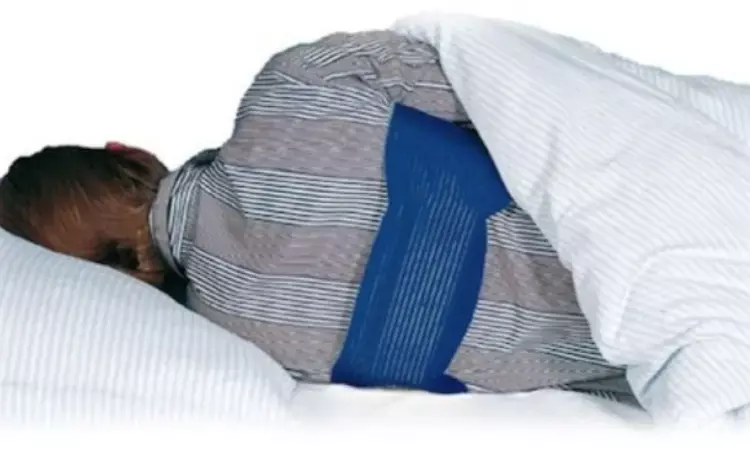- Home
- Medical news & Guidelines
- Anesthesiology
- Cardiology and CTVS
- Critical Care
- Dentistry
- Dermatology
- Diabetes and Endocrinology
- ENT
- Gastroenterology
- Medicine
- Nephrology
- Neurology
- Obstretics-Gynaecology
- Oncology
- Ophthalmology
- Orthopaedics
- Pediatrics-Neonatology
- Psychiatry
- Pulmonology
- Radiology
- Surgery
- Urology
- Laboratory Medicine
- Diet
- Nursing
- Paramedical
- Physiotherapy
- Health news
- Fact Check
- Bone Health Fact Check
- Brain Health Fact Check
- Cancer Related Fact Check
- Child Care Fact Check
- Dental and oral health fact check
- Diabetes and metabolic health fact check
- Diet and Nutrition Fact Check
- Eye and ENT Care Fact Check
- Fitness fact check
- Gut health fact check
- Heart health fact check
- Kidney health fact check
- Medical education fact check
- Men's health fact check
- Respiratory fact check
- Skin and hair care fact check
- Vaccine and Immunization fact check
- Women's health fact check
- AYUSH
- State News
- Andaman and Nicobar Islands
- Andhra Pradesh
- Arunachal Pradesh
- Assam
- Bihar
- Chandigarh
- Chattisgarh
- Dadra and Nagar Haveli
- Daman and Diu
- Delhi
- Goa
- Gujarat
- Haryana
- Himachal Pradesh
- Jammu & Kashmir
- Jharkhand
- Karnataka
- Kerala
- Ladakh
- Lakshadweep
- Madhya Pradesh
- Maharashtra
- Manipur
- Meghalaya
- Mizoram
- Nagaland
- Odisha
- Puducherry
- Punjab
- Rajasthan
- Sikkim
- Tamil Nadu
- Telangana
- Tripura
- Uttar Pradesh
- Uttrakhand
- West Bengal
- Medical Education
- Industry
How effective are vibrotactile positional therapy devices for patients with positional OSA?

UK: A recent review published in the BMJ journal Thorax has found vibrotactile positional therapy (PT) devices to be effective for treating positional obstructive sleep apnoea (POSA).
Vibrotactile PT devices reduced both the Apnoea Hypopnoea Index (AHI) and the percentage of time spent in the supine position (%Tsupine). However, the effect on daytime sleepiness, sleep quality, and disease-specific quality of life was minimal.
Obstructive sleep apnoea is a common sleep disorder affecting nearly 1 billion people. The supine sleep position is a risk factor for OSA, and those with OSA that predominantly or exclusively occur in the supine position are referred to as patients with POSA. There is a variation in the exact definition of POSA but is often defined as an AHI in the supine position that is twice that of the non-supine AHI, with an overall AHI>5 events/hour.
Vibrotactile positional therapy is a new treatment modality for positional sleep apnoea patients, which reduces time in the supine position. It is also suggested to reduce the severity of obstructive sleep apnoea (OSA), thereby improving patient-centred outcomes. Abdullah S ALQarni, National Heart and Lung Institute, Imperial College London, London, UK, and colleagues aimed to determine the effect of vibrotactile PT on the AHI and %Tsupine in POSA patients compared with baseline. Second, they aimed to investigate the effect on the quality of life, daytime sleepiness, and sleep quality.
The researchers performed a systematic review and meta-analysis of randomized controlled trials (RCTs) and cohort studies that determine the effect of vibrotactile PT in patients with positional obstructive sleep apnoea. Searches were performed via online databases up to 29 October 2022. 1119 studies were identified of which 18 studies met the inclusion criteria comprising 8 cohort studies and 10 RCTs.
The authors reported the following findings:
- The use of vibrotactile PT significantly reduced the AHI at follow-up compared with baseline (mean difference −9.19 events/hour).
- The mean %Tsupine was also significantly reduced (mean difference −32.79%).
- The percentage changes in the AHI and %Tsupine were 43% and 70%, respectively.
- Secondary outcomes were daytime sleepiness, quality of life and sleep indices. These showed minimal change, although follow-up was short.
"We found evidence that vibrotactile PT decreases the time spent in the supine position and the severity of OSA, however, the effect on self-reported daytime sleepiness does not reach clinical significance and there is a lack of evidence on the longer-term effect of PT," the researchers wrote.
"Other, more targeted outcomes for OSA, such as vitality, have limited data and follow-up periods were often short. Therefore, there is a need for well-designed clinical trials to fill these evidence gaps," they concluded.
Reference:
ALQarni AS, Turnbull CD, Morrell MJ, et alEfficacy of vibrotactile positional therapy devices on patients with positional obstructive sleep apnoea: a systematic review and meta-analysisThorax Published Online First: 21 June 2023. doi: 10.1136/thorax-2021-218402
Dr Kamal Kant Kohli-MBBS, DTCD- a chest specialist with more than 30 years of practice and a flair for writing clinical articles, Dr Kamal Kant Kohli joined Medical Dialogues as a Chief Editor of Medical News. Besides writing articles, as an editor, he proofreads and verifies all the medical content published on Medical Dialogues including those coming from journals, studies,medical conferences,guidelines etc. Email: drkohli@medicaldialogues.in. Contact no. 011-43720751


